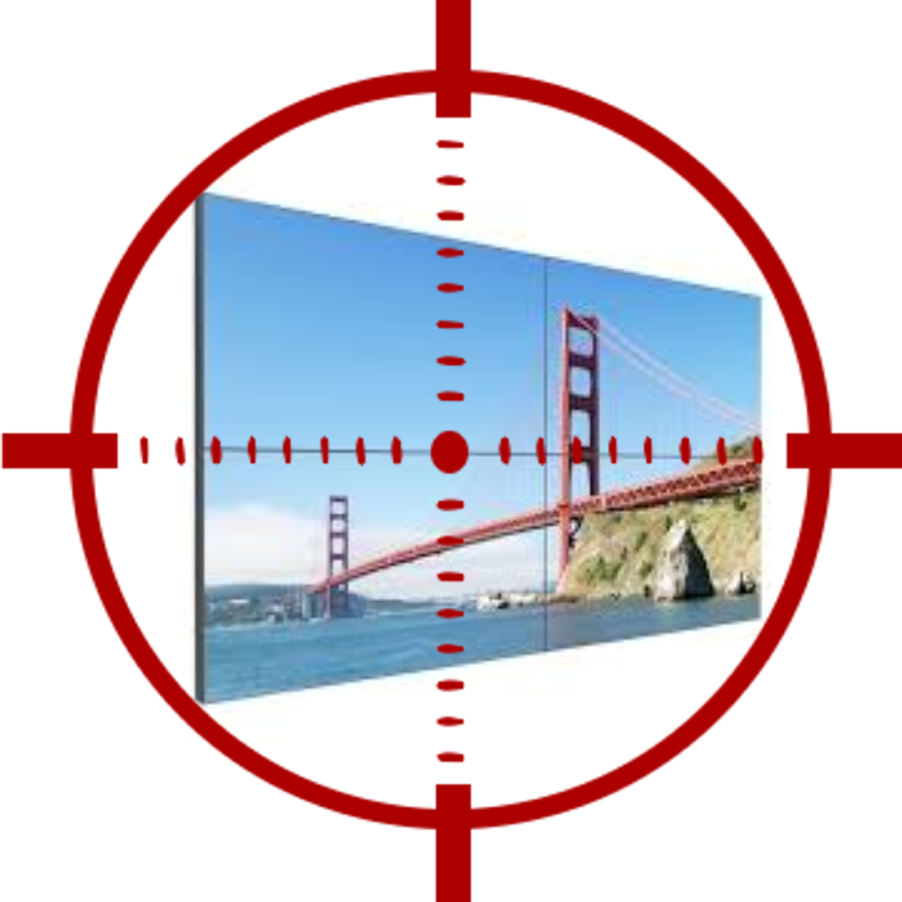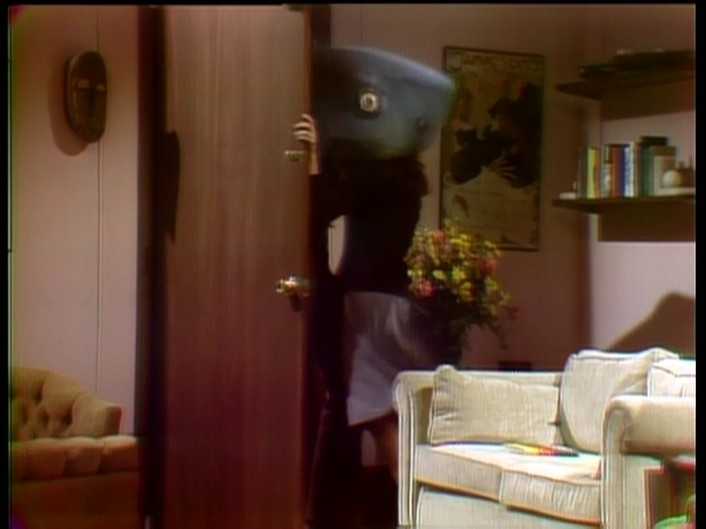UHD and Laser Just Killed Your 2×2
Let me start by saying I love video walls and arrays. I’ve sold a few of them, ranging from a 10×1 array that traveled across a curved wall, to 14 foot tall, interactive video columns that travel on tracks, to standard digital signage walls. In my current role, I love them even more, because it means that compared to a projector or single LFD, I get to attach more hardware to a project, which is good for business.
However, the only constant is change, and recent changes in technology should have integrators rethinking the 2×2 video wall.
 Advances in resolution and projection technology may have just killed the 2×2.
Advances in resolution and projection technology may have just killed the 2×2.
With the arrival of the 84” UHD screen, I am certain that 2X2 video walls using 42” displays will all but disappear. An 84” UHD display offers the same screen area as a 42” 2×2 array, as well as the same pixel density as a 2×2 with 1080p screens.
The advantages to using a single display are numerous. Only one display needs to be mounted and leveled. There are no screen mullions to create a crosshatched interruption in the content. Only one display needs to be calibrated. Screens do not need to continually be recalibrated to match color temperatures. There is a single point of failure. There is no need for the purchase and storage of a spare display.
The only scenario I can envision in which a 2×2 with 42” displays would be advantageous is if you are feeding each screen dedicated 1080p content. In that case you would not need a third party video wall processor to window those 4 sources on one display. However, some 84” UHD displays have built in quad screen capabilities that allows you to split the screen and feed each quadrant a different source, so even that may not be a factor if you choose the right display.
Other than that, there really are no disadvantages of using a single 84” UHD display ILO four 1920 x 1080p displays in a 2×2 array, which is why your 2×2 business in small screen sizes will definitely transition over to single screen UHD instead in the near future.
What about larger screen sizes?
In larger screen sizes you will be seeing some shift away from 2×2 arrays and toward UHD as well, but not toward single large format displays (LFDs) but toward projectors instead.
2×2 walls that have typically utilized 46”, 55”, 60”, and 70” displays to create 2×2 walls with 92”, 110”, 120” and 140” diagonals may now start being replaced by single UHD projection based images. These screens again will have the same pixel density as their 2×2 1080p array counterparts and can easily be used to create all the diagonals listed above.
“But Mark, nobody WANTS projectors anymore!”
Yes, I can hear you yelling at your screen right now. The only problem with that response is that you’re wrong.
The more accurate statement is
“People don’t want maintenance or consumables.”
They want a bright, impressive picture without the cost of bulb replacement, and without having to continually service filters and fans.
For those of you reading who say that projectors can’t offer that, especially with ambient light around, pick up the phone…
Ring. Ring.
“Yes, this is technology calling. We have your wake up call.”
It’s no secret that ambient light projection screens have been around for some time and even more are being introduced. However these surfaces alone have not been 2×2 killers. The ambient light rejection screens did not solve the larger issue of projector maintenance and bulb replacement.
Who’s there?
Laser Projector!
Laser projection will create a paradigm shift. These projectors have the same life span as an LFD without the worry of lamp brightness roll off or replacement. Because they run cool and don’t require large fans and the associated filters, they will not require the maintenance that their UHP, Xenon, and even LED illuminated counterparts do. This means that they can be used in near 24/7 applications now, just like commercial grade LFDs.
There have been some lower end laser illuminated projectors on the market for some time. However these were not true RGB laser light sources. They utilized laser in coordination with LED and some awesome AV trickery to eliminate lamps, but didn’t achieve full brightness advantages of laser nor the color accuracy.
Newer laser projectors that use full RGB laser light sources like those from Sony and Barco do and achieve 6000-7000 lumens currently, but if you heard the interview with Bill Beck “The Laser Guy”, he says 60,000-80,000 lumens is achievable.
Just to compare, a standard commercial grade LFD is about 450 nits. That’s equivalent to about 41 lumens/sqft or 1025 lumens on a 92” screen. We all know that in ambient light you will not achieve the contrast you need at this brightness, but with the referenced brightness of 6,000-7,000 lumens above, a laser projector can get very close to the contrast of a 450 nit LFD even in ambient light. For brighter applications and LFD may still be the only way to go, as they make versions that go up to 5000 nits (remember to wear your solar eclipse viewing glasses). However, if laser projectors do get to that achievable 80,000 lumen spec, even on a 140” diagonal screen (same size as a 2×2 array with 70” monitors) they could yield a 1400 nit projector based solution, which would hold up against a lot of ambient light.
Here we go back around.
The other thing that is very interesting about laser projection is that the light is controllable and lockable. Because a laser engine is very precise and is not subject to lamp roll off, you can lock in specific values for the red, green, and blue lasers.
In traditional lamp based projectors, screens still had to be able to reflect a wide gamut of light, as the projector’s values for the core colors could change over time. With laser projectors, we open the door to the development of even better light rejecting screen materials, as the material can be tuned to very specific amplitudes of light. This means that the end results are only going to get better as laser proliferates.
Rear projection and new amazing short throw lenses will also help to eliminate the silhouetting concerns that a projection based system may bring. It will finally be possible to create large images with all the brightness and duty cycle of a flat panel array, without worrying about consumables or any of the structural concerns, mounting headaches, or ADA compliance issues a video array may bring with it. Oh yeah, and you also eliminate the bezel interruptions, which for the viewer, can be huge.
So where will the 2×2 survive?
The 2×2 array will still have a home of course, but in some very specific applications. Direct sunlight applications could use 2×2 arrays if you specify the right ones for the brightness and heat involved, however I still think that true RGB LED arrays are a better fit if you have the budget, especially with the new 1.5mm dot pitch versions now available.
The greater opportunity for the 2×2 to thrive today is in interactive applications, where the viewers are within arms’ length of the screen. This requires displays with more pixel density, (If you want to push displays to the limit of the human eye’s ability to resolve the pixel structure) so utilizing four UHD LFDs would yield an array with a UHD-2 resolution of 7680×4320.
Now of course when UHD-2 and 8k projectors hit the market, they’ll kill these applications as well.
Finally, with the proliferation of low-end commoditized LFDs, there will be some that do 2x2s not because they are the best fit, or even the right choice, but because it is the only result the value engineering will support. Have fun making money on those.
At the end of the day, video walls will still be relevant in our AV arsenal, but now they are much more relevant in larger configurations beyond the 2×2. Those applications should be safe for now…or are they?
To be continued…



